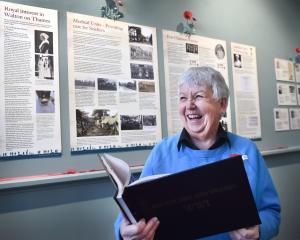
They may look all glitzy and glittery, but they have the potential to cause some nasty injuries.
And cats would know, because their curious nature encourages them to climb around the enticing branches, often bringing them down with disastrous consequences.
So the Accident Compensation Corporation is urging southerners to be wary of the hidden dangers lurking within Christmas trees when taking them down again this festive season.
ACC injury prevention lead James Whitaker said almost 1200 people, nationwide, have suffered injuries involving Christmas trees over the past decade, costing more than $1 million.
About 70 of those injuries occurred in Otago and Southland between 2013 and 2022.
Almost three-quarters of the injuries (72%) were "soft-tissue" injuries like muscle strains and ligament tears, and most of the time they occurred while people were lifting or moving trees, he said.
"Christmas can be a busy time when we are often doing things in a rush, and this can increase the chance of an injury occurring.
"Take care when you are moving, carrying or lifting a Christmas tree as our claims data shows this causes a significant number of Christmas-related injuries.
"This time of year there are also lots of festive celebrations toasting to the end of the year and the summer ahead.
"If we take the time to assess the risk in all these situations, we can avoid injuries and keep doing our favourite things with the people we love to spend time with."
Mr Whitaker said New Zealanders generally knew the safe way to do things, but sometimes they made poor decisions when under pressure or in a hurry.
"Our research shows 90% of all injuries are predictable, and therefore preventable, and Christmas-related injuries are no different."
Mr Whitaker said many of the injuries occurred when people underestimated the risk and overestimated their ability.
Christmas trees could be "heavy and awkward to transport", but there were several things people could do to reduce the chance of injury.
"These include avoiding carrying trees overhead or low to the ground to protect your shoulders and lower back (this might be a two-person job), taking your time and having a plan, making sure there are no hazardous objects in your way and seeking help when manoeuvring trees.
"Remember, if you get injured, this impacts not just yourself, but also your friends, family, and workmates," he said.










!["[The sector is] less competitive than groceries and banks that the government spend a lot of...](https://www.odt.co.nz/sites/default/files/styles/odt_landscape_small_related_stories/public/story/2025/04/billie_moore.jpg?itok=GN8uIA4p)
